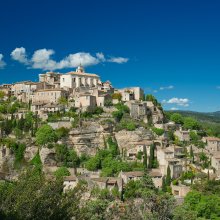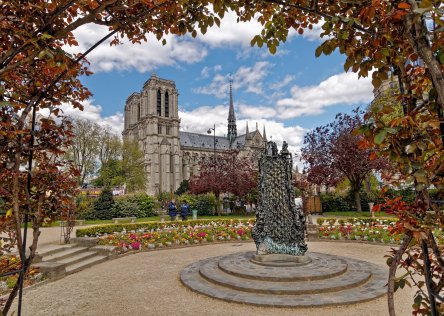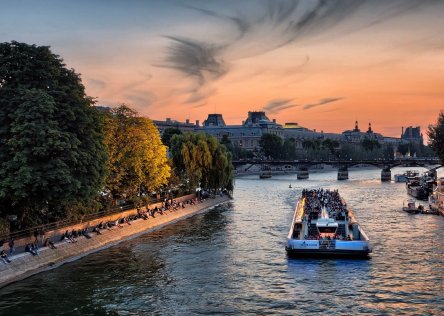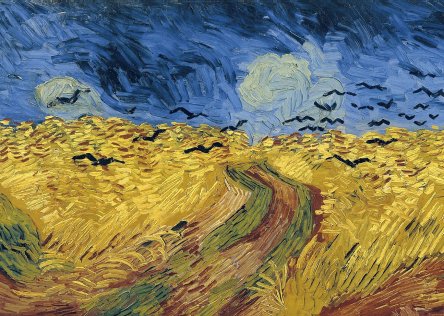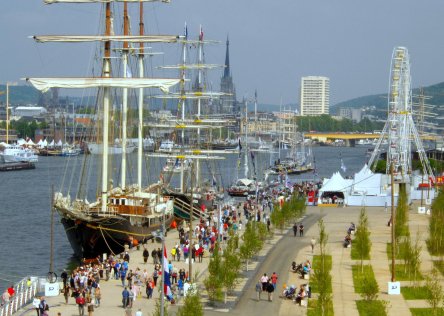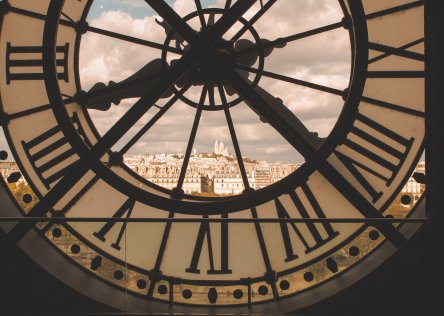Every May, Gypsy communities gather in the coastal town of Saintes-Maries-de-la-Mer in Provence from all over Europe and beyond to worship their patron saint, Sara La Kali (Black Sara). The festival is a fascinating mix of religious tradition and carnival. During this vibrant celebration of Gypsy faith and culture, the streets, squares and beaches are filled with campsites and the town pulses with an incredible party atmosphere day and night. Friends and families reunite and children are baptized in the town’s church.

Photo: Fiore S. Barbato
The History of St. Sara
Legend has it that in the 16th century, St. Sara arrived from Palestine with Saints Marie-Jacobé and Marie-Salomé, the two patron saints of Saintes-Maries-de-la-Mer, as their servant and companion. Others believe that St. Sara was a Gypsy who had settled on the shores of Provence, and was the first to welcome the two exiled women from the Holy Land. Black Sara has been celebrated as a saint by the Gypsies ever since, although she is not recognized as such by the Vatican.
Festival Traditions
The statue of St. Sara normally resides in the crypt of the local church of Saintes-Maries-de-la-Mer. Here Gypsies gather, light a candle and pray to their saint. Prayer notes are placed close to her statue, which is draped in bright-colored robes. On 24th May each year, all the Gypsy pilgrims head down to the sea with the statue carried on high by horsemen known as gardians. This procession symbolizes the anticipated arrival of Saints Marie-Jacobé and Marie-Salomé.
One young Gypsy woman is selected to represent St. Sara and follows the gardians down to the sea. When the procession reaches the shore, men on horses gallop into the sea with her while the accompanying crowds follow, shouting “Vive Sainte Sara!” with musicians playing flamenco on guitars and eastern European melodies on accordions. After Sara La Kali is returned to her crypt, the party really gets started, with the musicians from all over European creating that familiar fusion unique to Gypsy music.
The procession down to the sea is repeated the following day with statues of the two Saint Maries, but the atmosphere is calmer as many Gypsies begin to leave the town.
Things to Do in the Camargue
The Camargue is a haven for wildlife, and famous for its Camargue bulls and white horses. We recommend the following outdoor and cultural activities to further immerse yourself in the culture of the Camargue. All of these activities can be included in our Provence itineraries, subject to availability.
Bird-watching in the Camargue Wetlands
The vast wetland of the Camargue is home to a large numbers of different bird species, making it a popular bird-watching destination. Various species of egrets, herons, curlews, spoonbills and kingfishers all inhabit this area of the Rhone River delta, as well as the bird for which it is most famous: its flamingos. In December and March, the flamingos perform their spectacular mating dance and show off their beautiful plumage. The best time of day for bird-watching in the Camargue is early in the morning.

Photo: Andrea Schaffer
Horseback-riding in the Camargue
The Camargue is well-known for its cowboys which roam the wetlands on the region’s famous Camargue white horses. There are horseback riding excursions available from a number of different stables in the area. The best time to go is in the morning when there is more wildlife to see, and to avoid the midday sun during the summer months. Bring plenty of mosquito repellent and cover exposed skin, as the wetlands are a mosquito’s paradise!

Horse riding in the Camargue (Photo: sjdunphy, Flickr)
See a Bull-racing Show at the Arena
The Camargue is an iconic breed of domestic cattle native to the region after which they are named. They live in semi-feral conditions in the Camargue wetlands and are raised principally for the traditional sport of the course camarguaise, a form of bloodless bull-fighting, better described as ‘bull-racing’.
Several men called raseteurs compete to outrun the bulls in the ring, whilst removing knotted ribbons from the bull’s horns. Unlike Spanish bull-fighting, the men and the bulls in the Camargue Races are there on equal terms. In fact, it’s usually the individual bulls that are the stars of the show, while the racers run the risk of serious injury or even death.
A bull which leaves the arena with his ribbons intact - thus upstaging the men who were chasing him - will receive an ovation from the crowd. Visitors to the region can experience this unique spectacle at the Saintes-Maries-de-la-Mer arena.

Photo: jmt-29, Flickr
Contact us now to find out more about planning a visit to the Camargue or any of the other regions we cover.

